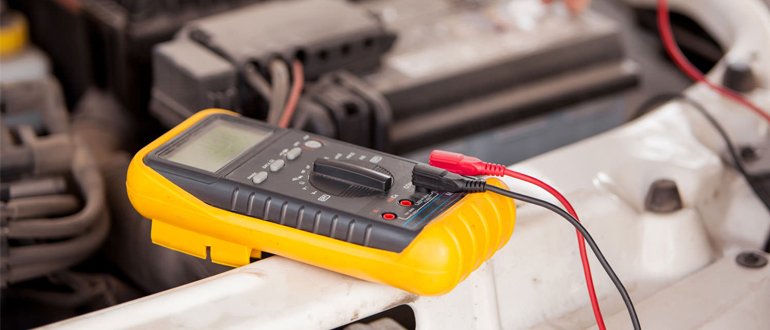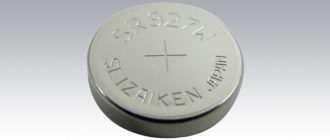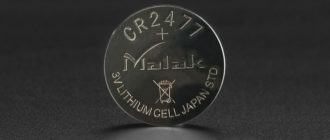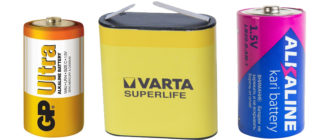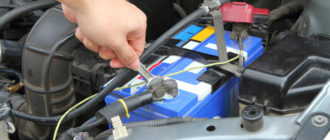Often car owners cannot start a vehicle due to battery self-discharge. This process is natural and occurs both for external and internal reasons.
Content
- What is battery self-discharge?
- Why is it dangerous and what can it lead to
- Which batteries are subject to self-discharge?
- Which batteries have the lowest self-discharge level?
- How to measure the level of self-discharge
- What level of self-discharge is the norm
- What to do when self-discharge level is higher than normal
What is battery self-discharge?
Releasing from the manufacturer's factory, the battery is designed for a certain capacity and a certain amount of electricity received. But in the process of storing the battery without operation, the dissolution of the negative electrode begins. Hydrogen is released, and the battery loses its charge of electric current.
On the positive, this process occurs due to the dissolution of metal oxide in sulfuric acid. But here it is less pronounced.
The discharge of the battery can be:
- normal when within fifteen days the battery loses less than 10 percent of its maximum capacity;
- electrolyte. When the plates are destroyed, and wear particles settle to the bottom. These particles can short circuit the plates and cause a discharge;
- operational. Dust soaked in moisture or antifreeze collects on the battery, which creates a bridge between the electrodes. In this process, the car owner may not feel that the battery is discharging, but it is.
The temperature also affects this process, for example, in extreme cold or heat, the rate that occurs inside the electrode dissolution battery may increase.
Self-discharge can be affected by the included devices in the cigarette lighter when there is no one in the car for a long time, a car clock, etc.
Why is it dangerous and what can it lead to
Any type of self-discharge leads to a loss of capacity, a decrease in electric current when the ignition is turned on, and to a deterioration in the general properties of the vehicle’s battery. This is due to the following reasons that appear in the process:
- deep discharge of the battery robs her of 3 percent of the total capacity. At 10 deep discharges, capacity loss will be 30 percent. With this data, the car owner will not be able to start the vehicle;
- during oxidation, the walls of the plates are destroyed. Again, the battery will not be able to accumulate electric current, as a result, it will become unusable.
Undervoltage will not allow to charge the battery. As a result, the percentage of charge is only half full. It is very dangerous in the cold season. Sulfation of the plates under such conditions is faster. Another danger of an undercharged battery is freezing in severe frosts, as the density is greatly reduced.
And also there should not be an increased voltage leak. Due to this process, the capacity decreases, and the plates crumble. The car owner can determine that the process of shedding the plates has begun, according to the dark color of the electrolyte.
Attention! It is not recommended to light the battery from non-standard devices. In such cases, monoblock explosions or plate deformation are possible.
Which batteries are subject to self-discharge?
Not only batteries on cars are subject to self-discharge. Natural discharge occurs both with conventional batteries for watches or remote controls, as well as in alkaline, acid, lithium-ion, ni-cd and ni-mh.
The most ideal conditions for storage are the “dry” method. The battery is not flooded with electrolyte. The oxidation process does not occur. This means that the chance to buy an already half-discharged battery is reduced.
Important! When buying, you need to pay attention to the production date.
Which batteries have the lowest self-discharge level?
As already mentioned in the last block, batteries without electrolyte do not have a limited shelf life. But now, manufacturers no longer store batteries like that.
Therefore, with the lowest natural self-discharge will be batteries with a lead-calcium alloy. They are made in the form of maintenance-free devices.
These batteries use only pure acid and distilled water. Various inhibitors are added to the electrolyte by the manufacturer. Such batteries have an extended service life.
How to measure the level of self-discharge
When buying a battery or after long storage, check the voltage and capacity. The car owner can do this in the following way:
- Take the multimeter and turn the knob to the position of the Voltmeter or "V".
- Attach one of the two probes of the device to the terminal.
- Hold the other along the hull.
- In the event of a leakage of electric current, the device will show that there is voltage on the case. This is due to contamination or electrolyte leaks.
To measure the current in the battery, the car owner will need to do the following:
- Turn the multimeter knob to the current measurement position.
- Set to maximum value - 10 Amps.
- One touch the negative terminal.
- Holding the first probe on the terminal, the second touch the positive terminal on the battery.
- The multimeter display will show the maximum current value that the battery gives out during operation.
On a working battery, the value will be 0.02 - 0.06 Amperes. In this case, a strong discharge does not occur. If the battery passes current somewhere, then the number on the display will rise. In this case, the car owner will need to find the place of charge leakage and liquidate it.
To do this, disconnect all devices powered by electric current from the battery in the car. Check again. If the value returns to normal, then the battery is working. If not, look for other causes of the leak.
What level of self-discharge is the norm
Self-discharge under normal conditions should be 1 percent loss of the full battery capacity in the first days. After 60 days, a deep discharge of the battery may occur. And after a hundred and forty days, the electric charge may completely disappear.
Normal storage conditions are:
- temperature not higher than 20 degrees Celsius with a plus sign and not lower than + 15C;
- dry room;
- on the surface between the electrodes there is no dirt, dust and other elements that can create conditions for the rapid discharge of the battery.
If the battery was in use, then for such devices the norm is 2 percent loss. With a really bad battery, 4 percent of current leakage per night.
Note! If the battery is not used, it is best to recharge it sometimes to avoid a full discharge.
What to do when self-discharge level is higher than normal
To get rid of the signs of self-discharge while the battery is in storage, the following rules must be observed:
- keep the case clean;
- add distilled water;
- wipe the battery dry if the electrolyte was accidentally spilled;
- Before disconnecting from the car, be sure to charge to the maximum;
- check voltage once every 30 days.
With an increased level of self-discharge, the procedures described above are also used to reduce it. In addition, it is forbidden to operate batteries with a charge below 75 percent in the cold season. And summer time is below 50 percent.
If you do not comply with any of the above rules, this will lead to a complete discharge of the battery. Irreversible processes will start, after which it will be impossible to restore the battery.
It is necessary to charge with small currents. Thus, the car owner will increase the depth and degree of charge. For example, if the battery capacity is 60 amperes per hour, then a current of 6 A is required for charging.
Have questions or have something to add? Then write to us about it in the comments, this will make the material more complete and accurate.

